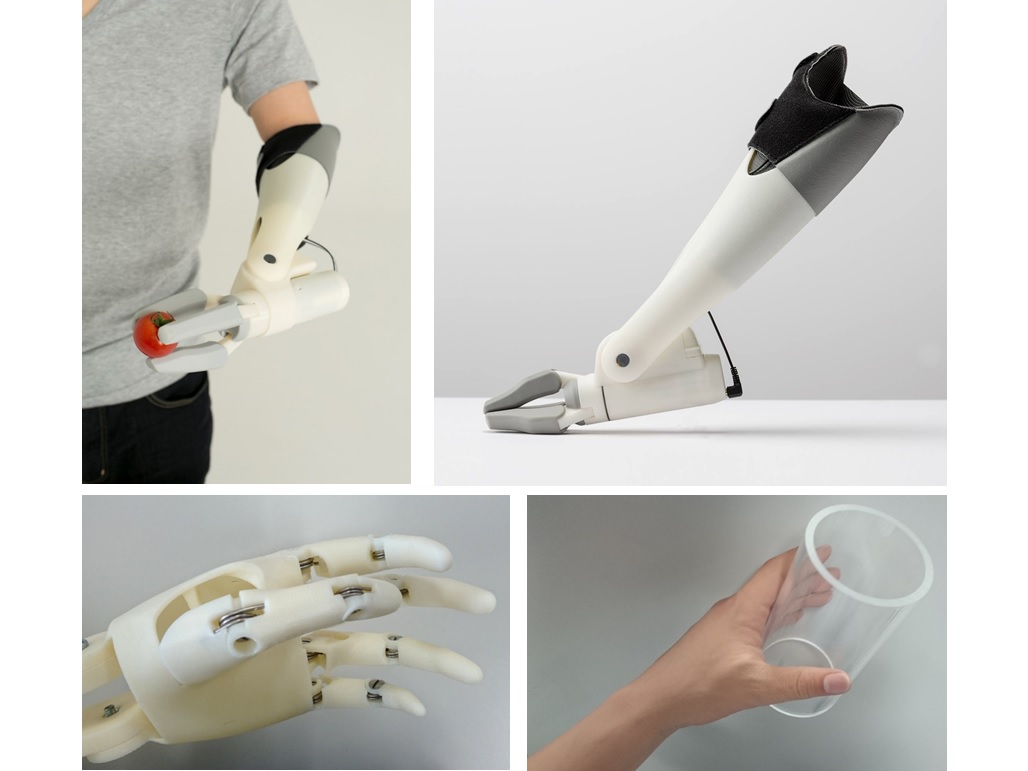A prosthetic hand acts as a substitute limb for those that may be missing one from birth or lost one later in life. There are several types of prosthetic hands, all functioning in their own way and prioritising different aspects for the user. Electrically-powered prosthetic hands offer a range of functions, however are costly. Alternatively, cosmetic prostheses are more affordable but do not provide active function. Because of this, many users ultimately settle with a prosthetic that does not perform to their expectations.
Recently, I watched a documentary that looked into resolving this issue. It showed Masahiro Yoshikawa, a professor from the Faculty of Robotics and Design at the Osaka Institute of Technology, focusing on creating highly functional protheses, while keeping costs low. This is an aspect of prosthetic research that I view as important, as it is essential that prosthetic users are not denied choice because of affordability. Prior to his research, a myoelectric prosthetic was the superior option. This consists of a prosthetic with sensors that detect electrical signals created by muscle movement from the residual limb, triggering a motor. The motor then converts the signal into finger movements, allowing the user to grasp objects. However, this technology is expensive and the prosthetic is heavy, which is not ideal for most individuals.
Offering a low-cost, lightweight, and highly functional prosthetic
Yoshikawa reviewed the manufacturing process for myoelectric prostheses, and figured out that one reason they are so expensive to make is due to the plaster moulds that have to be created prior to making the socket. He concluded that using a 3D printer to create the socket would eliminate the need to produce a mould beforehand, both decreasing manufacturing time and manufacturing cost.
“At the core of Yoshikawa’s research is the desire to create prosthetic hands that people want to wear, rather than something people wear because they have no other choice.”
NHK World – Japan: Helping Prosthetic Hand Users Become Choosers
Another improvement Yoshikawa set to develop was the issue of the myoelectric prosthetics malfunctioning after prolonged use. This was because, when users perspirate inside the device, it resulted in a short circuit between electrodes and disrupted the detection of the myoelectric signals. He proposed that, by measuring the height of the muscle as a change in distance, this signal instead could be used to generate motion. More specifically, through using a photoelectric sensor inside the socket, the muscle bulge created by movement of the residual limb will produce a change in distance from the sensor, detected via infrared rays, activating the motor. Consequently, with the sensor not directly resting on the skin and being surrounded by the urethane foam, the issue with perspiration is resolved alongside the benefit of the photoelectric sensor being significantly cheaper than the myoelectric one.

Since the filming of this documentary, this foundation has been used to create a three-fingered device and a five-fingered device, with realistic options available through the use of a silicone glove.

This video shows the three-fingered device in action.
Through researching this topic, it has enabled me to understand the components that need to be considered when developing new prostheses, along with providing equal options for everyone. By developing a lightweight, cost effective, highly functional prosthetic, this has opened up options for individuals who would have previously been limited to a purely cosmetic prosthetic. Hopefully, with the advancement of technology, like what Yoshikawa has demonstrated, a wider range of prosthetic options will be available which users can choose from dependent on their lifestyle.
Check out the link below for the documentary:
This is a good reflective blog that guides the reader along your learning adventure, carefully building in appropriately chosen source material an images that form an integral part of your blog.
You could improve by better referencing of sources (hyperlinks?) and by weighing up the evidence, or commenting at least on the sources from which you draw your data.